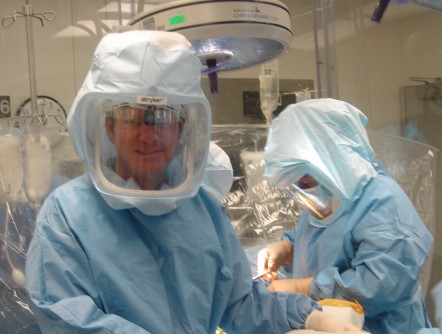Technology Allows for Ultraprecise, Customized Procedure

Newswise — In a career spanning more than two decades, orthopedic surgeon Geoffrey Westrich has seen numerous advances in joint replacement surgery that benefit patients. He believes robotic-assisted knee replacement, which allows for an ultraprecise procedure, is one of the most exciting.
Dr. Westrich, who specializes in knee and hip replacement at Hospital for Special Surgery in New York City, reached a milestone last year when he performed his 500th robotic-assisted knee replacement. He uses the MAKO robotic system, which is FDA-approved for both total and partial knee replacements.
"Joint replacement is highly successful in relieving arthritis pain and improving quality of life, and the robotic system allows us to really customize the procedure for each patient," says Dr. Westrich. “The MAKO system allows for optimal alignment and positioning of the knee implant, as well as optimal ligament balancing, all critically important for the best outcome and long-term success of the surgery. Such precision could potentially lead to a longer-lasting knee replacement.”
Dr. Westrich says over the past few years, he has seen more patients in their 40s and 50s with arthritis who are candidates for a knee replacement. The main concern for patients in this age group is that the implant may wear out over time. Although a knee replacement could last 20 years, or even longer, it doesn’t last indefinitely. For younger individuals in particular, robotic-assisted surgery has made joint replacement an attractive option, as it could prolong the life of the implant, according to Dr. Westrich.
Over the past couple of years, studies have focused on the pinpoint accuracy of the robotic-assisted knee replacement system. A study by Dr. Westrich and colleagues published in the Journal of Knee Surgery this year found that the technology was advantageous in the training of orthopedic surgeons, as it allowed for increased accuracy and precision.
A separate study in the Bone & Joint Journal in 2018 by researchers in the United Kingdom found robotic-assisted total knee replacement was associated with decreased pain after surgery, improved early functional recovery and a shorter hospital stay.
Before surgery, a CT scan is taken of the patient’s knee. The scan is then uploaded into the Mako system software, where a 3D model of the joint is created. The 3D model is used to plan and assist the surgeon in performing the joint replacement.
In the operating room, the orthopedic surgeon controls a robotic arm that uses computer‐guided mapping software, similar to GPS, integrated into the surgical instruments to position the implant in the knee joint.
The digital tracking system constantly monitors and updates the patient’s anatomy and enables the surgeon to make real‐time adjustments to optimize implant placement, alignment, ligament balance and joint motion. This provides each patient with a personalized surgery tailored to his or her individual anatomy.
“With more accurate alignment and positioning, the implant should experience less wear and friction, and it could ultimately last longer,” says Dr. Westrich, who notes that studies will be needed to confirm this over the long term.
He says the precision of the robotic‐assisted procedure also offers more protection to the surrounding soft tissues and enables more healthy bone to be preserved, an advantage in the event another knee replacement is needed down the road.
